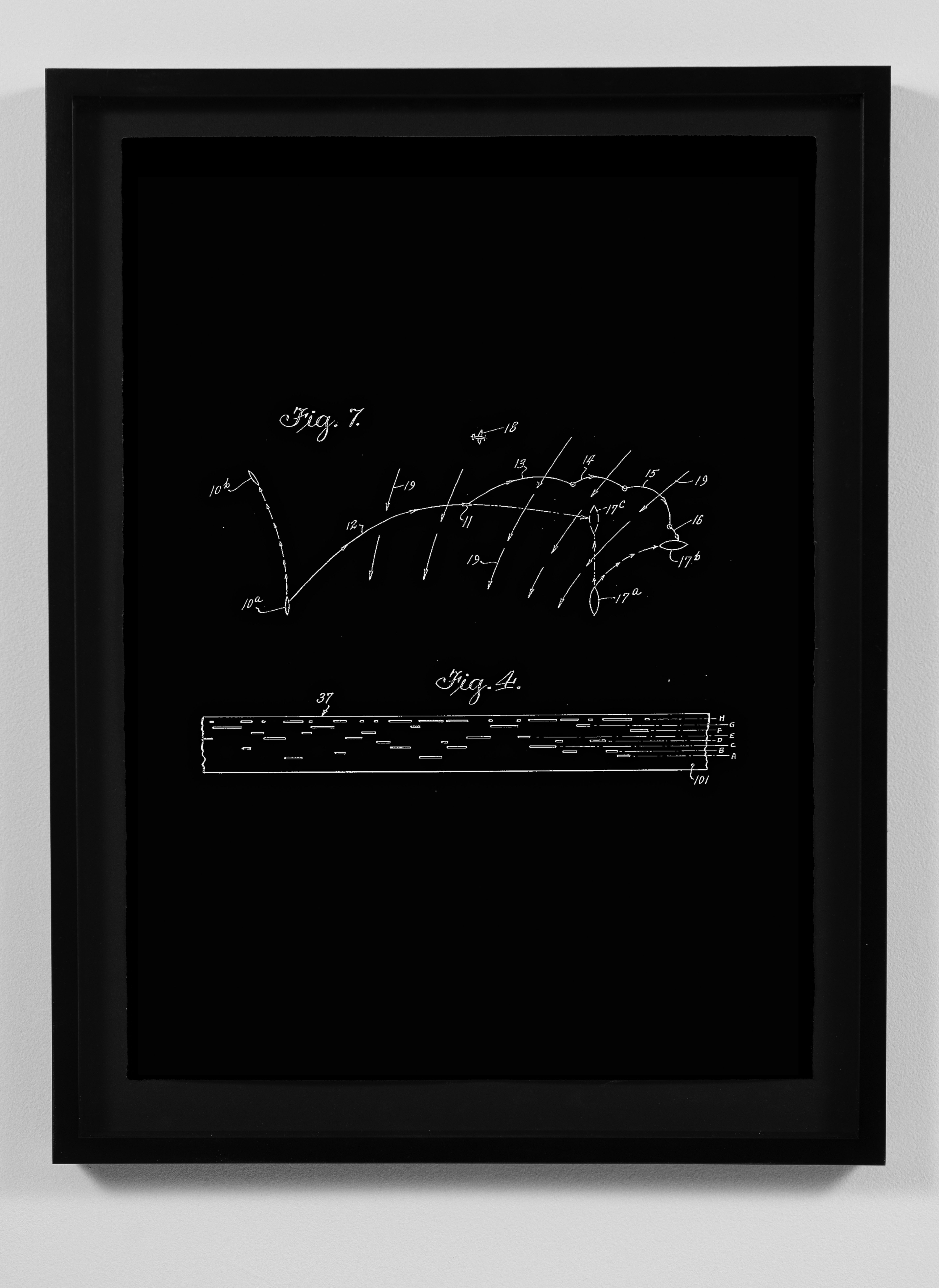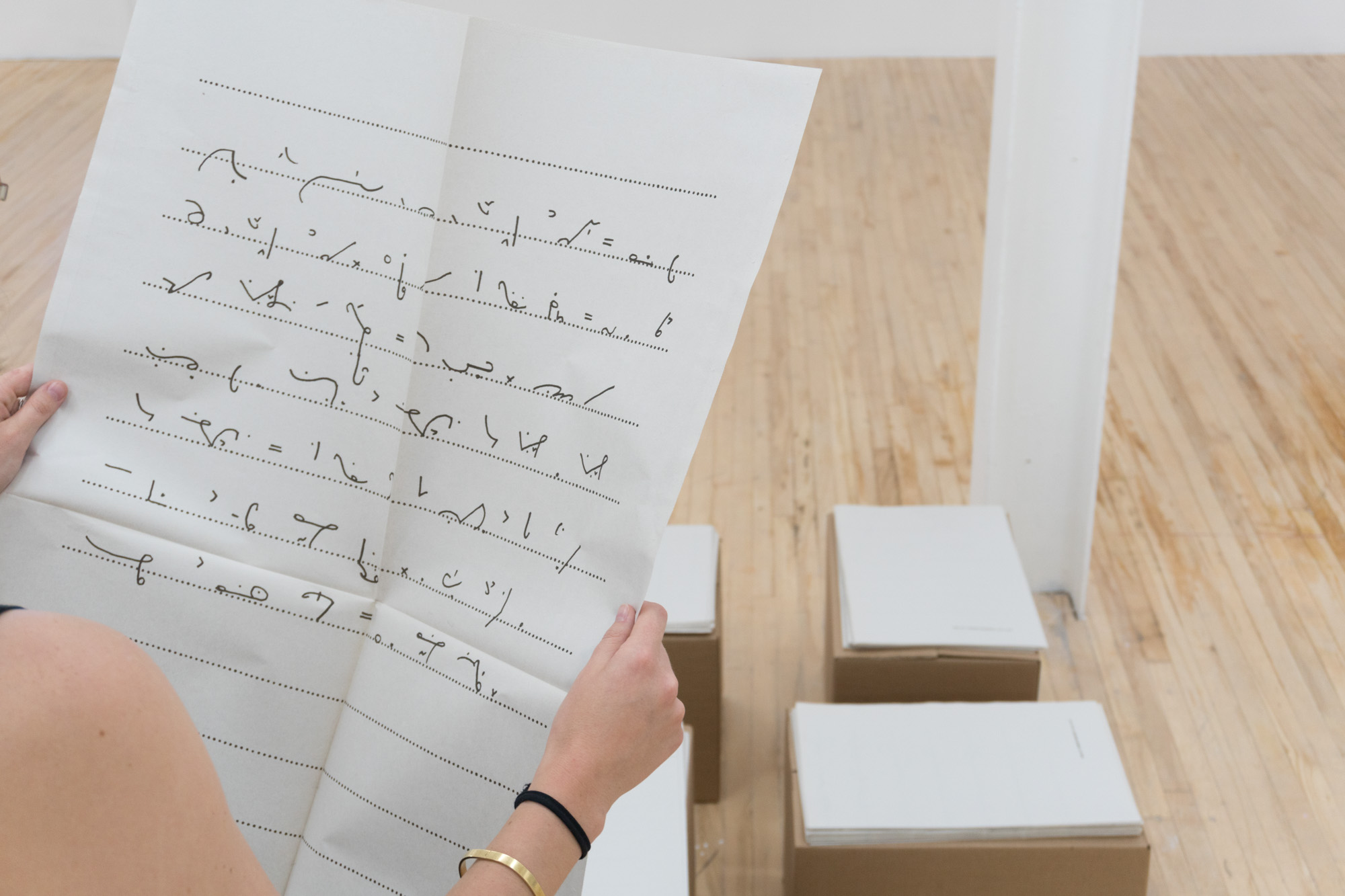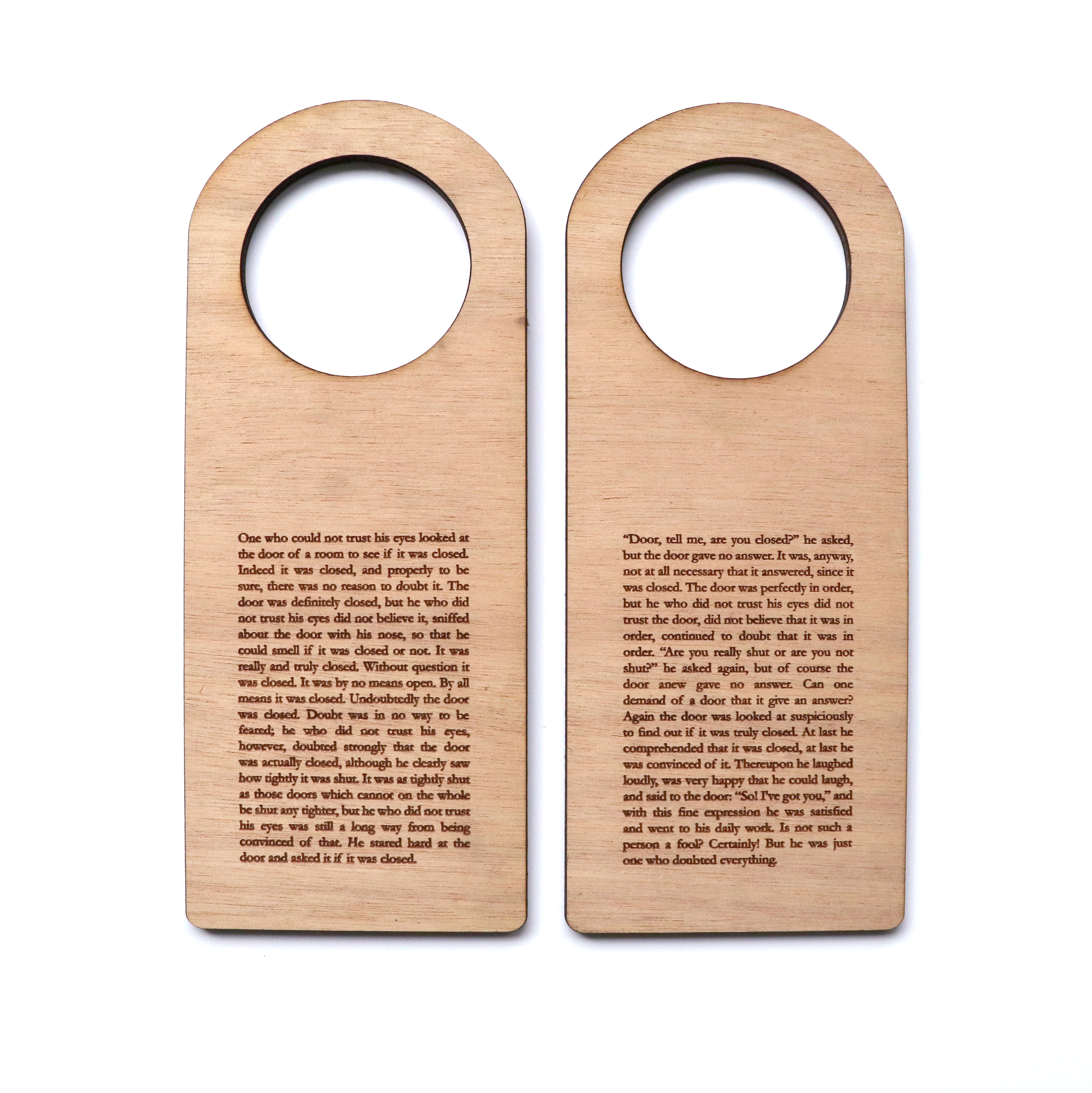Secret Communication System

Secret Communication System, 2019
series of 4 serigraphs on Arches Velin Noir, each 76 x 56 cm
A series of four serigraphic prints that use the drawings from U.S. Patent 2,292,387 for a Secret Communication System invented by the Austrian actress Hedy Lamarr and the American avant-garde composer George Antheil. The series is printed in white ink on matte black paper, and resembles instructional drawings made on a chalkboard.

Score for The Sacred Prostitute

Score for The Sacred Prostitute, 2019
player piano roll, custom box, 8 x 8 x 32 cm
sonification by James B. Maxwell, roll by Julian Dyer
This player piano roll is a translation of Mina Loy’s play, The Sacred Prostitute (1914), into a score for music. The “notes” reflect the punctuation from Loy’s original text, which contained an unusual amount of em-dashes, en-dashes and ellipses. This extraneous punctuation suggests unfinished thoughts or words not spoken in the original manuscript. This score attributes sound to these silences, and the resulting music is random and aleatoric, much like Futurist noise compositions of the era.
Manifesto

Manifesto, 2014
series of 7 offset prints on newsprint, each 86 x 58 cm, folded, endless copies
Manifesto is a translation of a Mina Loy’s 1914 “Feminist Manifesto” into shorthand. Written at the outset of the war and after an encounter with F.T. Marinetti, Loy’s call for equality is a direct attack on the Futurist’s self-proclaimed ‘scorn for women’. Her response captures the tenor of the time: it is explosive and polemical, punctuated by exclamation marks and dashes, enlarged type and underlines. This edition of Loy’s manifesto is transcribed into shorthand, a form of abbreviated writing used to quickly record speech—the lingua franca of secretaries and reporters. Printed as an unlimited edition on newsprint, visitors are invited to take copies away and post them in the streets.

Installation with Collectif Blanc, Montréal
Doubt

Doubt, 2019
laser cut and engraved wood, 22.5 x 9 x 0.5 cm
An excerpt of a text by Robert Walser, So! I've Got You (1917), engraved on the front and back of a doorhanger. The text expresses doubt about whether or not the door is actually closed. The text begins, “One who could not trust his eyes looked at the door of a room to see if it was closed.”